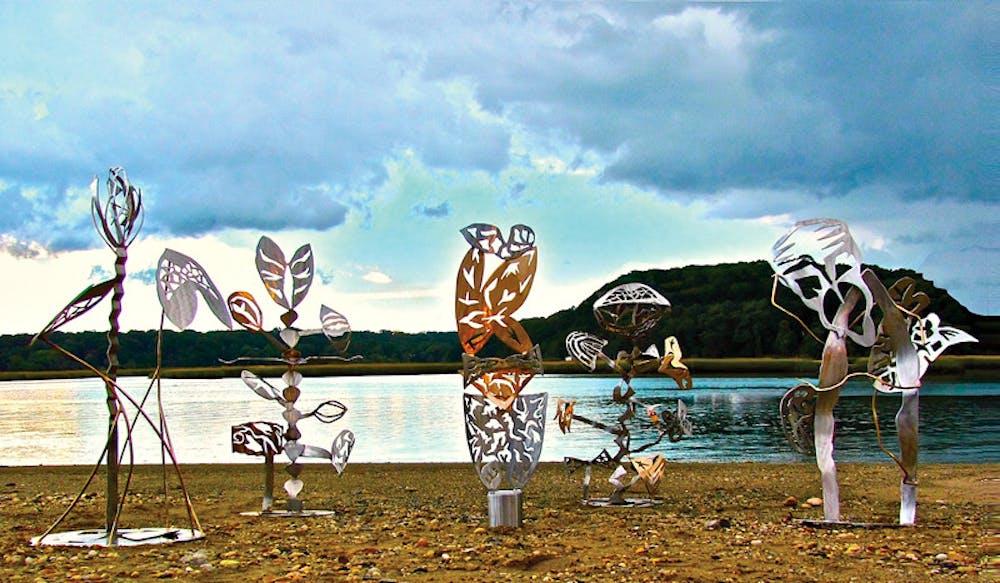While some students spend their summers watching television or lounging on the beach, this year’s cohort of Royce Fellows traveled across the world to pursue projects ranging from advocating abortion rights to exploring the archaeological remains of ancient Turkey.
In a few weeks, they will begin to share their work with the community through a series of panels.
Each year, the Royce Fellowship, funded by Chuck Royce ’61 P’92 P’94 P’08, allows about 20 students to pursue “really imaginative and crazy, interesting ideas,” said Kerrissa Heffernan, the director of the fellowship.
Between 60 and 80 students apply for the fellowship, which provides $4,000 in funding for fellows to undertake summer projects of their design anywhere in the world. “Fellowships are funding the scholar,” Heffernan said. “Sometimes the committee will even fund things they think will fail. ... They’re probably going to go down in flames, but let’s see what happens,” she added. Heffernan said they choose scholars who they think will benefit from engaging with the Royce community and who will grow from their experiences.
The Royce is “definitely one of the defining aspects of my academic career thus far,” said Michael A. Johnson ’13, one of this year’s fellows.
Over the summer, students work in varying capacities with faculty mentors and upon their return to campus in the fall, engage in bimonthly meetings with the other fellows and several faculty advisers.
The fellows are divided into groups of three that meet throughout the spring to discuss how to link their varied projects and how best to introduce their work to the community, said Julia Ellis-Kahana ’13, one of this year’s Royce Fellows.
For her project, Ellis-Kahana worked for an organization “that promotes safe abortion access in countries where that access is restricted,” she said. The organization also tries to incite international public scandals by sending ships 12 miles out from countries where abortion is illegal or restricted. In these international waters, women are then provided with a pill that has been medically shown to induce safe abortions.
“Medical abortion is such a revolution for women. It completely revolutionizes the way we think about abortion and who has access to it and puts the power back in the hands of women,” Ellis-Kahana said.
Ellis-Kahana was grouped with Johnson and Richard Ramirez ’12.5. Johnson traveled to an area outside of Delhi, India, to study how farmer protests have led to halted industrial development, he said. Ramirez spent the summer in Texas, studying how cities would be different if mayors were able to exert more influence over public education systems, he said.
The three students discovered their projects involved different levels of the law, Ellis-Kahana said. The law can serve “as a vehicle for change or an obstacle for change,” she said. They agreed they wanted their panel to serve as a “generative discussion to help us think about these things,” rather than a structured presentation, Ellis-Kahana said.
It was “intellectually engaging” to be able to apply what he learned in the classroom to the actual situation in India, Johnson said.
Maya Mason ’15 is one of only two students in the history of the fellowship to have received one directly after her first year of college. Heffernan told her she had an “‘ice cube’s chance in hell’” of winning a fellowship, Mason said, but her proposal to work as an apprentice to a well-known sculptor was accepted. Ultimately those plans fell through, and she needed to adapt, Mason said.
She found an organization in West Oakland, Calif., that allowed her to use its facilities and create eight sculptures over the course of the summer. Living in a city with a lot of gang violence was different for Mason, and one of her challenges was “how to react and try to create beauty when my everyday experiences were so terrifying,” she said.
Her panel, which includes Ben Sadkowski ’14 who photographically documented the life of squatters in Amsterdam and Claire Straty ’13, who photographed conditions of poverty and homelessness in Michigan, realized they all “tried to take away something beautiful from ... troubling places,” Mason said.
“I’ve learned from the other Royce Fellows that there is so much talent at Brown, and it doesn’t take applying to a nationally or internationally renowned scholarship to bring out that talent and to do good with it,” Ramirez said.
Ellis-Kahana said the fellowship has enabled her to “build a very strong network of peers and professors who care about my work and respect what I’m doing and support me in doing that,” she said. “Having that community of scholars forces you to learn how to present your work and make it accessible to people who aren’t in your discipline and don’t understand your framework.”
“(The fellowship is) just as eccentric as Brown is — it lets you exercise that eccentricity,” Ramirez said.
Zachary Rufa ’14 used his fellowship to explore the history of American Freakshows over the past two centuries. Nicholas Bartos ’13 examined underwater archaeological sites in Turkey in order to learn about the country’s cultural history.
“They’re so passionate about the stuff they do,” Heffernan said. One the most memorable proposals she received involved studying cycloptic sheep, she said. “When a proposal comes across your desk about cycloptic sheep, you’re interested.”

ADVERTISEMENT




